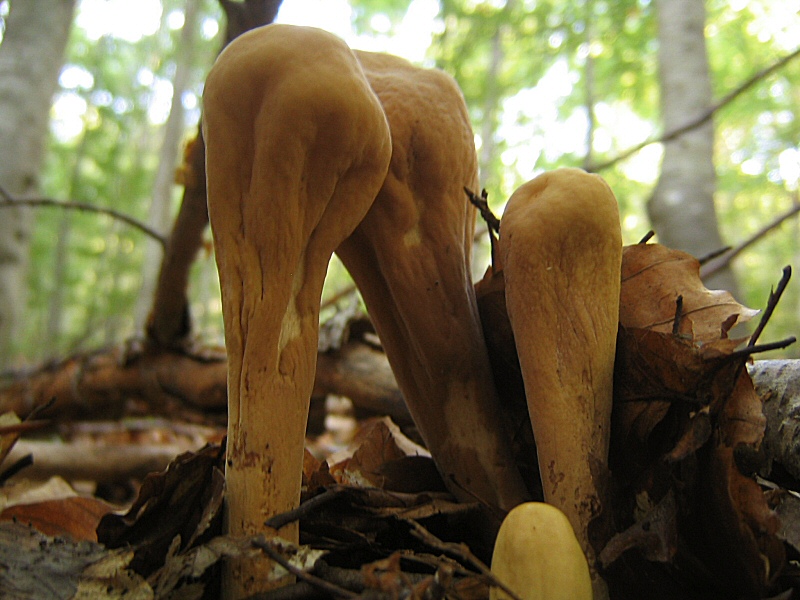Giant Club: Red Data Book of Armenia

Category. EN – Endangered.
Brief description. Fruit bodies are 5–15 (20) x 0,5–4 (6) cm, at first light yellow, then with yellow, sometimes with whitish, yellowish or brownish colouring, clavate, cylindrical, linguiform, club–shaped, solitary or gregarious, often open, annual. The whole surface of the fruit body (except the lower part of the stipe) is covered with a layer of spores. Flesh is spongy, white, red–brownish when cut. Spores are 11–16 x 6–10 µm, white or yellowish, smooth, broad ovoid, nonamyloid.
Distribution. Generally in Europe, Asia, Northern America, Southern Caucasus (Georgia, Armenia). In Armenia it is rarely met. It is found in Ijevan floristic region – in the territory of “Dilijan” National Park, in the surroundings of Tavush.
Ecological, biological and phytocenological peculiarities. It grows on the soil in humid zones, in broad–leaved and mixed woods on the altitude of 1100–1800 m above sea level, from August to September. Saprotrophic fungi on humus.
Main factors of endangering. Intensive forest exploitation, loss of habitats caused by human economic activity.
Nature conservation measures. In Armenia it is conserved in corresponding ecosystems of “Dilijan” National Park. It is necessary to carry out monitoring of the state of the discovered populations and discovery of new habitats, as well as collecting and conserving mycelium cultures in collections.
Suggestions
 The Ministry of Environment sent a letter international partners to draw their attention to the real danger of environmental disasters as a result of Azerbaijan's large-scale aggression towards the territory of Armenia
The Ministry of Environment sent a letter international partners to draw their attention to the real danger of environmental disasters as a result of Azerbaijan's large-scale aggression towards the territory of Armenia
 Vicia pisiformis: Red Data Book of Armenia
Vicia pisiformis: Red Data Book of Armenia
 Vavilovia formosa: Red Data Book of Armenia
Vavilovia formosa: Red Data Book of Armenia
 Trigonella capitata: Red Data Book of Armenia
Trigonella capitata: Red Data Book of Armenia
 Trigonella astroides: Red Data Book of Armenia
Trigonella astroides: Red Data Book of Armenia












